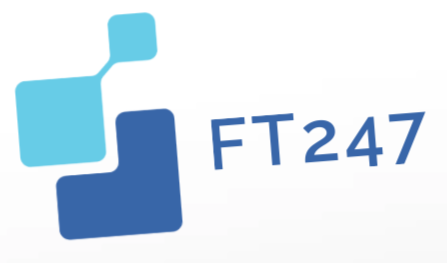Introduction to NFTs
Non-fungible tokens (NFTs) have emerged as a revolutionary technology in the digital world, allowing for the ownership and trade of unique digital assets. Unlike cryptocurrencies such as Bitcoin or Ethereum, NFTs represent ownership of a specific item, whether it be art, music, or virtual real estate. The global NFT market saw a tremendous boom in 2021, with sales reaching approximately $25 billion, up from just $95 million in 2020. This report aims to guide aspiring creators on how to launch their first NFT collection effectively.
Understanding Your NFT Concept
Before diving into the technical aspects, it’s crucial to define what your NFT collection will represent. Consider the following components:
Identify Your Niche
Choose a specific theme or niche for your NFT collection. Popular niches include:
1. **Digital Art**: Unique pieces created by artists.
2. **Music**: Exclusive tracks or albums.
3. **Collectibles**: Items that can be collected, such as virtual trading cards.
4. **Gaming**: In-game assets or characters.
Research existing successful collections within your chosen niche. For example, the Bored Ape Yacht Club (BAYC) generated over $1 billion in sales by offering unique digital art pieces with exclusive community benefits.
Define Your Target Audience
Understanding your audience is essential. Identify their demographics, interests, and spending habits. For instance, if your collection targets gamers, consider how they interact with digital assets and what motivates their purchasing decisions.
Selecting the Right Blockchain
Choosing the right blockchain is critical for launching your NFT collection. The most popular platforms include:
Ethereum
Ethereum is the most widely used blockchain for NFTs, supporting standards like ERC-721 and ERC-1155. It offers a robust ecosystem and high liquidity, making it a top choice for many creators. However, transaction fees (known as “gas fees”) can be high, sometimes exceeding $100 during peak times.
Polygon
Polygon is a layer-2 solution that offers lower fees and faster transactions compared to Ethereum. It’s ideal for creators looking to minimize costs while still leveraging Ethereum’s security.
Solana
Solana has gained popularity for its high throughput and low transaction costs, making it a viable option for NFT creators. However, it has a smaller marketplace compared to Ethereum.
Creating Your NFT Artwork
Once you’ve defined your concept and chosen a blockchain, it’s time to create your NFT artwork.
Designing Unique Artworks
Invest time in creating unique and visually appealing pieces. Utilize design software like Adobe Illustrator or Procreate. If you’re not an artist, consider collaborating with a digital artist or using platforms like Fiverr or Upwork to find talent.
Creating Metadata
Metadata includes essential information about your NFT, such as title, description, and attributes. This information helps potential buyers understand the value of your NFT. For example, the metadata for a digital painting might include details about the artist, the inspiration behind the piece, and any special features it possesses.
Minting Your NFTs
Minting is the process of turning your digital artwork into a blockchain-based NFT. Here’s how to do it:
Selecting an NFT Marketplace
Choose a marketplace to mint and sell your NFTs. Popular options include:
1. **OpenSea**: The largest NFT marketplace, supporting various digital assets and cryptocurrencies.
2. **Rarible**: A decentralized platform that allows creators to mint and sell NFTs easily.
3. **Foundation**: A curated marketplace focused on digital art.
Wallet Setup
To mint and sell NFTs, you need a cryptocurrency wallet. MetaMask and Coinbase Wallet are popular choices that allow you to store cryptocurrencies and interact with NFT marketplaces. Ensure you fund your wallet with enough cryptocurrency to cover gas fees for minting.
Minting Process
Follow the instructions on your chosen marketplace to mint your NFT. Typically, this involves uploading your digital artwork, filling in the metadata, and confirming the transaction through your wallet. Be prepared for gas fees, which can vary widely.
Marketing Your NFT Collection
After successfully minting your NFTs, the next step is to market them effectively.
Building a Community
Engaging with potential buyers is vital. Consider creating social media accounts on platforms like Twitter and Instagram to showcase your work and build a following. Join NFT communities on Discord and Reddit to share your collection and connect with like-minded individuals.
Utilizing Influencer Marketing
Collaborating with influencers in the NFT space can help promote your collection. Reach out to NFT influencers who align with your brand and propose collaborations, giveaways, or features.
Content Creation
Create engaging content around your NFT collection. This could include behind-the-scenes videos, interviews with the artist, or detailed blog posts explaining the inspiration and process behind the artworks. Utilize platforms like YouTube and TikTok to reach a broader audience.
Launch Strategy
Consider a launch strategy that creates buzz around your collection. This could involve:
1. **Pre-sale Access**: Allowing early supporters to purchase NFTs at a lower price.
2. **Limited Editions**: Creating scarcity by limiting the number of NFTs available.
3. **Exclusive Perks**: Offering additional benefits for collectors, such as future airdrops or membership in a private community.
Post-Launch Strategies
After launching your NFT collection, continue engaging with your community and exploring ways to enhance your brand.
Continuous Engagement
Keep your audience engaged with regular updates, new releases, and exclusive events. Consider hosting virtual meetups or Q&A sessions to foster a sense of community.
Analyzing Sales Data
Monitor sales data to understand buyer behavior and preferences. Analyzing metrics such as average sale price, volume, and customer demographics will help you refine your future collections.
Exploring Future Opportunities
Look for opportunities to expand your NFT collection. This could involve collaborations with other artists, creating physical merchandise tied to your NFTs, or launching a new series based on community feedback.
Conclusion
Launching your first NFT collection can be a rewarding venture, both creatively and financially. By following this guide and leveraging proper marketing strategies, aspiring creators can navigate the complexities of the NFT landscape. With a well-defined concept, a supportive community, and a strategic approach to launching, you can successfully enter the exciting world of NFTs.

